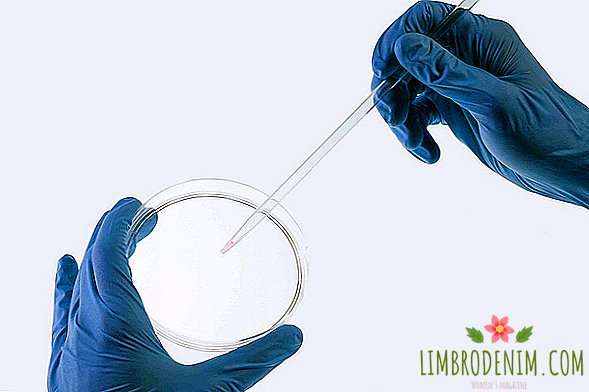Let's live longer: How scientists plan to slow down aging
Average human lifespan depends on the conditions of this very life, and in the course of history, this figure was constantly changing - from war to war, from discovery to discovery. A modern resident of a developed country lives much longer than its ancestors. In the Middle Ages it was difficult to meet a person older than 30-35 years, and not so long ago, at the end of the XIX century, the average life expectancy was only 40 years (in Russia - 30-40, in the UK - 41-50). Now the average person lives about 67 years, it is associated with a change in social patterns, the development of medicine, the general increase in living standards.
The length of our lives has increased, but this is not enough for us: scientists all over the world are looking for ways to prolong youth. It's not about external manifestations, but about health: there are new ways to deal with diseases associated with aging, and to ensure healthy longevity - from transplantation of a retina grown in a laboratory to changing the structure of DNA with the help of gene therapy. In the fear of old age there is little rational: growing up is a natural, quite interesting and cognitive process. But who among us, if it were such an opportunity, would not have taken “extra time” in order to have time to learn, see and do a little more? We understand what science is capable of today in order to slow down the body withering, and what kind of breakthroughs we can expect in the foreseeable future.

In a National Geographic documentary called Breakthrough: The Age of Aging, a biodemographer and gerontologist from the University of Illinois, Dr. Jay Olshansky, is optimistic about researching anti-aging methods: “If we can slow down aging even a little, it will become a monumental achievement. People can feel younger while being older. The science of aging has already made enough breakthroughs to lead us to the idea that this is plausible and, moreover, is possible. This is already happening in ie tests with other species, and it is likely that the same things can be done for the people. "
Extending healthy life and getting rid of the so-called diseases of old age is an important direction in gerontology. As is well known, in addition to the general wilting of the organism with age, there are a number of diseases, in the high-risk group of which, in particular, the elderly: hypertension, cardiac arrhythmia in various forms, diabetes, joint disease. Of course, in addition to age, there are a lot of other factors in the development of diseases, however, prevention will allow reducing their risk, namely, a healthy lifestyle. About the benefits of different sports - from yoga to running - we told more than once, but that many doctors say that giving up bad habits like smoking and lust for fatty foods can help prolong a healthy life. At the same time, there are many avid smokers and baking lovers among the long-livers and far from all favor sport. Contrary to this, their bodies are able to protect themselves from rapid aging. The mechanisms of natural longevity, scientists still have to learn - perhaps the case in a specific longevity gene.

While American scientists were looking for ways to eliminate the outward signs of aging, their Japanese colleagues made successful retinal implantation.
In matters of rejuvenation, people tend to trust the "revolutionary" methods, because they require much less effort on their part than a balanced diet, mobility and regular physical examinations. One of the new trend ways is controlled adaptation training (CVAC) under cyclical pressure changes. The sai-fi procedure is carried out in a single capsule, where fresh air is supplied, while the pressure and temperature are constantly changing. The reaction of the body to these drops is similar to the reaction to interval, circular or strength training: in fact, training takes place without effort. Supporters of CVAC argue that staying in a capsule increases the concentration of mind and endurance of the body, stimulates regeneration processes. According to Dan Holz, the owner of the Beverly Hills Rejuvenation Center, which offers this service, it’s enough to slow down the aging process in a CVAC capsule for 25 minutes each day. The device, which cost - 65 thousand dollars, allegedly uses the first racket of the world Novak Djokovic, however, this fact is not enough for the US Food and Drug Administration (FDA) to approve the use of CVAC.
There are also "local" ways to cope with age, in particular, to support the regenerative function of the skin. In addition to various anti-aging injections, it is now possible to acquire a “second skin” for a while - an invisible film that is applied to the skin with a thin layer, giving it smoothness and elasticity: bags under the eyes disappear, wrinkles are smoothed. What sounds like science fiction is actually the result of research by scientists from Harvard and the Massachusetts Institute of Technology. In the May report for Nature Materials, the authors of the project claim that the “second skin” consists of widely used and FDA-approved silicone polymers and none of the 170 people who participated in the pilot studies complained of irritation or an allergic reaction.
Rocks Anderson, a renowned dermatologist from the Harvard Medical School, who collaborated with the developers of the “second skin,” biotechnologists from the Massachusetts-based Living Proof, said they took the matter seriously, made sure that the material was safe, easily distributed and kept on skin, and most importantly, was completely invisible. The film can be impregnated with sunscreen cream and not be afraid that sweat or water will wash away the product. The inventors of the “second skin” also expect that in addition to aesthetic purposes, it can be used to treat eczema, psoriasis, drying and other skin problems, by adding moisturizing and soothing ingredients. However, it will not be possible to stay young in a technological new skin for a long time - an invisible film lasts no more than two days.
← Invisible cream film smoothes wrinkles and protects against damage.
While American scientists were looking for ways to eliminate the external signs of aging, in 2014 their Japanese colleagues successfully implanted a retina grown from artificial (induced) multifunctional stem cells (ICS). A year later, now the 72-year-old subject reported that she had begun to see much better. Of course, transplanting a layer as thick as one cell is easier than creating a “three-dimensional” complex organ. But experiments on transplantation of renal and hepatic tissues grown from reprogrammed iSCs are already under way, for example, at the CSC Applied Research Center (CIRA) of the University of Kyoto, headed by Nobel laureate, Professor Sinya Yamanaka, at the University of California and John Hopkins University (Baltimore, USA).
Russian scientists also contributed to the development of cell therapy. For example, researchers from the Institute of General Genetics of the Russian Academy of Sciences, the Federal Scientific Clinical Center for Physico-Chemical Medicine with the participation of employees of the Moscow Institute of Physics and Technology conducted a comparative analysis of embryonic stem cells, three different types of ordinary (somatic) cells derived from them, and three types of reprogrammed stem cells derived from somatic. A detailed study of changes in gene activity led to the conclusion that embryonic cells are similar to reprogrammed ones and to the creation of a list of 275 key genes whose activity allows one to correctly present the results of reprogramming.
Scientists have concluded that the reprogramming process and the type of parental cells (from skin, urine, or any other material) did not leave any specific traces in the DNA. This experience has shown that the patient's own cells can be reprogrammed into multifunctional stem cells for further medical use and embryonic cells are no longer needed. This is an important step towards the cultivation of internal organs and even the treatment of certain diseases, in particular glioblastoma - the most common and most aggressive brain tumor.

Perhaps in the foreseeable future we will be able to “renew” a person in parts by growing organs from induced stem cells. However, this does not solve the fundamental problem of cell death as a result of the natural mechanism of aging. To slow it down, global scientific methods are needed. There are several biological processes that lead to aging and the diseases associated with it. Such factors include the cessation of cell division, accumulation of damage in mitochondrial DNA, shortening of telomeres (the end sections of chromosomes that perform a protective function), amyloid deposition in tissues (different types of amyloidosis are associated with Alzheimer's disease and type 2 diabetes). In studies aimed at increasing life expectancy, the main forces are thrown just to interfere with these processes.
Last winter, scientists in the United States embarked on large-scale research, they said, of the most promising drug that slows aging and hypothetically able to put an end to Alzheimer's and Parkinson's diseases. Metformin, designed to increase the amount of oxygen entering the cells, was originally intended for people with type 2 diabetes and is inexpensive: for example, it costs about 10 pence per day for British patients. Last year, scientists at the University of Cardiff found that patients with diabetes who took Metformin lived longer than people without a diagnosis, although according to statistics, the first had to die an average of eight years earlier.

Even a partial reduction in the symptoms of aging will significantly improve the quality of life of older people.
Now, researchers hope to prove that people who take metformin slow the aging process and stop the development of the disease. Previously, similar results were obtained in experiments with animals. Belgian scientists have found that metformin significantly increases life expectancy and the number of healthy cells in the roundworm Caenorhabditis elegans, while in laboratory mice it also strengthens the bones. Scientists believe that the drug can extend life by an average of 50%, increasing it to 110-120 years. It looks like science fiction, but in December 2015, the FDA gave a green light to test the drug to see if the newly discovered effect was spreading to people. To test the drug, it was planned to attract about three thousand people aged 70-80 years who have been diagnosed with cancer, heart disease or dementia, or who have high risks of their occurrence.
Gerontologist professor Gordon Lithgow of the Baka Californian Institute for Aging, one of the counselors in the test of metformin, admitted that FDA approval was not without a struggle: many charlatans had appeared on the anti-age technology market. For the sake of fairness, it must be said that in news bulletins on a topic it is sometimes impossible to distinguish real scientific facts from speculation. No serious complaints against metformin have been published yet.
← We are killed not by old age, but by diseases caused by the “wear and tear” of the body.
Another class of drugs that can slow down the aging process is the so-called senolitics. The action of these drugs is directed against the cells that have stopped their division. By their behavior, these cells resemble cancer cells, which means, according to scientists, anti-cancer drugs can be used to work with them. A group of scientists from various scientific institutions took dasatinib, an antitumor therapy drug (sold under the name Sprycel), and quercetin, a natural compound found in many fruits, vegetables, leaves and grains, and sold as a dietary supplement with antihistamine and anti-inflammatory properties (also not confirmed by clinical trials).
Experiments on cell cultures carried out by a group of scientists from various scientific institutions have shown that senoliticians selectively cause the death of old cells and at the same time have no effect on young and healthy ones. Dasatinib in the composition destroys aging cells - the precursors of fat cells, and quercetin was more effective against aging human endothelial cells and bone marrow stem cells of mice.
According to scientists, the combination of dasatinib and quercetin produces a powerful anti-aging effect, and tests on laboratory mice have shown that even a single administration of them improves the functions of the cardiovascular system, increases endurance and strengthens bone tissue. Scientists note that many people need to take into account many factors before testing Senolithic, but on the whole they are full of optimism: drugs will have to be taken infrequently, and even a partial reduction in the symptoms of aging will significantly improve the quality of life of older people.

Another step towards longevity was taken in September last year, when the head of BioViva, 44-year-old Elizabeth Parrish, was the first to undergo a course of anti-aging gene therapy developed by her own company. One part of the course was aimed at preventing the loss of muscle mass with age, the second - to increase the level of telomerase production. These telomeres, which protect chromosomes from wear and tear, shorten with each cell division. In the end, extremely short telomeres lose their ability to protect chromosomes, as a result of which cell dysfunction occurs and the body ages.
Parrish announced the beginning of the experiment on Reddit, urging users to ask her any questions. Note that Parrish was given an injection course in Colombia, the drugs were not approved by the FDA and the whole experiment was not without critical feedback from the scientific community. The technique was previously tested on cell cultures and laboratory animals, but it was not tested on humans - Elizabeth became the “zero” patient of her own company.
← The first person to undergo BioViva gene anti-aging therapy was the founder of this company.
The authors of the study state that they managed to stop the shortening of telomeres and trigger their growth. By March of this year, the telomeres Parrish, which were previously about 6.71 Kb, grew to 7.33 Kb, thus becoming "younger" by 20 years. The experiment continues - the researchers plan over the years to monitor the health of Elizabeth.
It is difficult to say what place in all these stories occupy the interests of biotechnology-sponsored investment companies and the pharmaceutical lobby. In any case, what biologists around the world are doing in laboratories is not looking for the secrets of eternal youth, but research on ways to increase life expectancy, improve physical condition, combat premature aging and other serious diseases, and therefore a good mission. Medicine does not develop as slowly as it sometimes seems, because a person is capable of much - and the more we live, the more we will be able to.
Photo: Cake78 (3D & photo) - stock.adobe.com, japolia -stock.adobe.com, Sergey Nivens - stock.adobe.com, Sergey Nivens -stock.adobe.com





